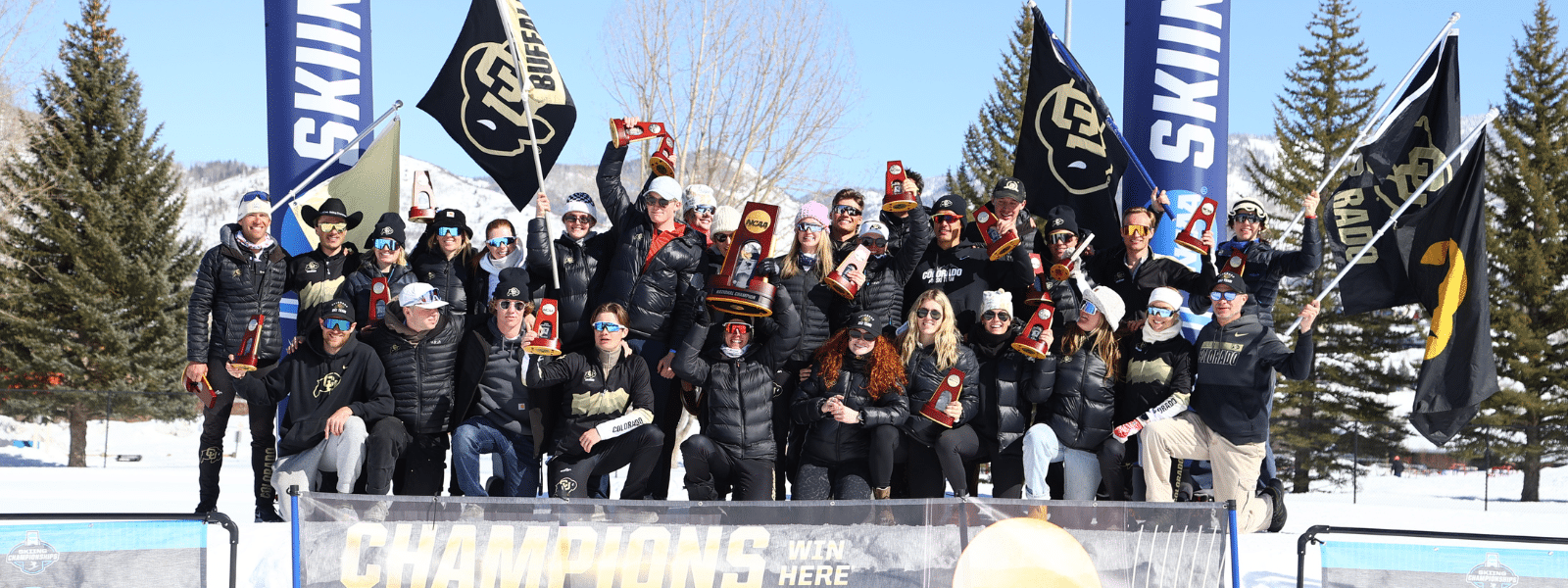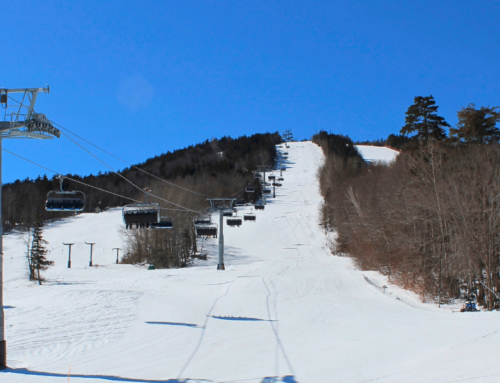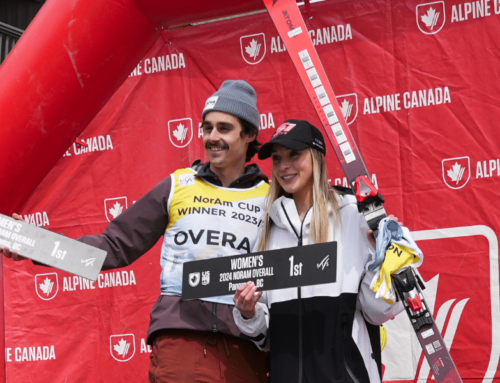Blake Lewis is a True American Pioneer
Blake Lewis is the inspiration for a generation of elite American ski technicians. He was the first person to prove a professionally trained US ski serviceman could compete with Europe’s best. He has immersed himself in the profession several times, and a few times he has needed to make a career change. However, the best way to tell his story is to first explain a little about the job of a World Cup ski technician.
The world of a ski technician
The men and women who service skis are undoubtedly the hardest working people in the sport. Year-round they put in countless hours toiling in shops, garages and basements around the globe. A ski service technician is often the first on the site and the last to leave. Even if they only work for one World Cup single event tech skiers, they are responsible for a room full of skis. You will often see a service technician arrive at a hotel and not have their ski bench organized for work until after dinner. Consequently, they work long hours throughout the night preparing skis to optimize the next day’s early morning training. Caffeine, energy drinks and beer are the constant friends of a professional ski service technician

& Blake Lewis
Ski technicians know how to get to every ski village and efficiently access their workspace. After all, every step counts when hauling hundreds of kilos of equipment in and out of a building. The more fortunate ski service technicians work in a ski room full of friends. However, others toil for hours and hours alone. If a professional ski service technician were to write a travel book, the storyline would be how to travel Europe in a van loaded to the roof. The title might be, Touring and Tuning in the Garages and Basements of the Alps.
Undoubtedly, ski service technicians are crucial contributors to a racer’s success. A pair of skis can feel unskiable or feel like magic depending on the ski technician’s preparation. Daily a ski serviceman will prepare multiple pair which allows racers to find their favorite ones for the conditions—one pair for warm-up, one for each training run, and probably an extra just in case. Consequently, some of the most highly respected World Cup personnel are ski service technicians. They are legends of the industry, though because it is a European-based sport, few are Americans.
Lewis’ ski technician story begins
Meet Blake Lewis. To SRM’s knowledge, Lewis was the first US-born technician to immerse himself entirely into the European ski service profession. He is one of the legends in the industry and a true American pioneer.
Lewis comments, “Being a technician is much more than tuning skis. To participate at the top of the sport, you must immerse yourself in the European ski racing culture. I was Identified by Helmut Langwallner while helping Atomic on the pro tour in the ’70s and he became my mentor. Langwallner was Franz Klammer’s Fischer serviceman when Klammer won the Olympic down hill in Innsbruck. He provided me an opportunity to immerse myself and learn the skill set I still use today.”


Lewis describes himself as a wanna-be-skier. He says, “Back in the ’70s, I had a part-time job with Atomic making pro sales at Squaw Valley and Alpine. Because of that job, I was in a position in 1977 to hear Atomic was looking for someone to assist their pro racing team. They were looking for someone to transport their equipment from race to race. Langwallner was in charge of the program. I got the job, and it changed the direction of my life.”
Lewis quickly gained Langwallner’s respect, and the next thing he knew, Lewis was living in Austria with a three-month job at Atomic. He immersed himself in everything involved in preparing and building race skis. He was in the forest to see the trees that would become ski cores and eventually knew the whys of every decision made to produce the finished products. It wasn’t long before Lewis’ 3-month job became year-round.
Lewis had become the first American-born, authentic, European factory ski service technician. He was living in Austria, speaking German in an Austrian dialect while methodically gaining knowledge from the best ski personnel in the world. Eventually, he became one of them.

Atomic begins to assign Lewis
Although working in pro racing for Atomic and doing service for the likes of Andrea Arnold had changed Lewis’ life, he now found himself servicing skiers from multiple countries and disciplines. His duties also included the skis for speed skiers Franz Weber and Steve McKinney. In that case, the two athletes produced four World Speed Skiing records skiing on Lewis’ work.
Lewis’s life got even more exciting in 1981 when Atomic joined the US Ski Team equipment pool. Atomic assigned Lewis to work with the US speed skiers, and his responsibilities included a young racer named Bill Johnson. Lewis found himself deeply immersed in the Austrian ski culture, but he’s an American at heart with an innovator’s mentality.

World Cup success comes to Lewis
One of the most prized races for any ski serviceman is the 2.8-mile-long Lauberhorn Downhill in Wengen, Switzerland. If you notch your belt with a victory on the longest track on the schedule, you have accomplished something extraordinary. A win there means your abilities will never again be questioned among your peers.
Lewis tells a funny story: “I was speaking with a frustrated TOKO guy; he had a new wax he couldn’t get anyone to try. Knowing my skis were already fast because of all the work I had already put into them, I was willing to give it a try. I remember meeting him in a grocery store to get the wax.”
Johnson won his first World Cup, the Wengen Lauberhorn,the next day, January 15th, 1984. Addtionally that season Johnson went on to win two more that season in Aspen and Whistler.
US downhill glory in Sarajevo
However, the Johnson-Lewis relationship became truly legendary that season at the 1984 Olympics in Sarajevo. Together, they won the first American Men’s Olympic Downhill gold medal. However, when asked how it felt, Lewis responded, “It was great, but I was doing my job, and Bill was doing his. We were on a mission.”
Doug Lewis, World Championship Medalist, was a teammate of Johnson’s and knows Lewis well. D Lewis adds, “Blake changed the sport of alpine ski racing and certainly changed what it meant to be a ski tech for a World Cup skier. Although he was Bill’s rep, he was a major part of the US Ski Team during the era when the US Speed Team finally emerged as a threat to take down the Austrians and the Swiss. Blake was a huge part of that.

D Lewis continues, “Billy’s skis were consistently the fastest in the world because of Blake. Billy owes probably half of that gold medal to Blake! He used to sleep with Bill’s skis to protect them from being stolen by the other teams. I’m sure many of today’s reps use techniques that originated from Blake. He is a legend but so soft-spoken and humble. You would never know that he changed the sport if you talk to him.”
Lewis worked another year with the USST Atomic skiers. However, he then felt the need for a change. He no longer looked forward to the 14-hour workdays and knew there was no option if he was going to provide the athletes their best opportunities to succeed.
Lewis finds himself at K2
In 1985, he found the change he needed with K2 Skis outside of Seattle. At first, he worked as the Manager of Winter Sports, but his ski racing knowledge was too valuable to go unnoticed. Before he knew it, he became involved in race ski production, development, and testing. Additionally, his work with the K2 race department opened the door to a productive stint as the ski technician for the Mahre brothers on pro racing’s Coors Tour. Eventually, in 1988 he assisted K2 athletes Tiger Shaw and Bill Hudson at the Calgary Olympics.

Time for a different life
After the 1994 season with K2, it was time for another change. Lewis decided to become an industrial climber. He began working on wind turbines, bridges, dams, high-rise buildings and refineries. Lewis says, “An industrial climber is a janitor on the road. There is nothing more than that.” However, when you look at the photos, it doesn’t appear to look like a “janitor job” everyone could take.
While working as an industrial climber, the ski racing world unexpectedly came back into Lewis’ life. He had always stayed engaged in ski preparation part-time in a retail shop that catered to racers. However, in 2012, a friend, Curtis Bacca, was working with the US ski cross team and was asked if he knew of a ski technician who could be a substitute for the Swiss team at the X Games. The Swiss team technician had a heart condition and was able to work at the Aspen altitude. Bacca knew the right guy; before you knew it, Lewis was at the X Games in Aspen.


Substituting brings Lewis back to the World Cup
The job was only supposed to be for a week, but at the end of the X Games, the Swiss coach insisted that Lewis join the Swiss team at the next World Cup. Soon he was off to Stoneham, outside of Quebec City. After that, the Swiss coach knew what he had and insisted Lewis come to the finals in Italy. Lewis explains, “That spring, I signed a contract with the Swiss Federation and worked with the Swiss through the Sochi Olympic Games.”
After the Sochi Olympic season, the Swiss coach signed on with the Australian Ski Cross program and took Lewis with him. During this period, Lewis accepted work as a commercial climber when possible and worked the rest of the year doing skis on the circuit.
Lewis finds a home in Canada
Currently, Lewis is working with the Canadian Federation primarily in snowboard cross and snowboard. However, if he can contribute, he is game for any assignment and enjoys helping the biathlon team.
Veteran Canadian Ski Cross athlete, World Champion and 4 time X Game medalist Chris Delbosco has spent a lot of time around Lewis. Delbosco states, “I’ve been very fortunate to spend some time in the ski rooms with Blake. I love to soak up his knowledge and listen to his stories from 40 years of race service, always over a coffee (or two)! He has seen it all and is a true master, but more than that, he is a great guy who is always willing to lend a hand or provide some insight.”
Delbosco continues, “One of my favorite stories is from a race in Val Thorens, France. Our hotel had wallpaper with photos of a bunch of historic ski racing podiums. One of them included Billy Johnson. Blake pointed to some markings on Johnson’s skis and chuckled, “Hey, that’s my writing.”
Lewis talks about his current situation: “Now I’m full-time with Canadian winter sports. However, I still spend six or seven months in Europe to make it work. Yeah. I’m no longer a factory serviceman. I’m a pool service guy working on multiple brands. But I still go and spend time in Europe. I know that I need to spend time at each factory. I don’t just show up and say give me the skis or boards. Instead, I say, let’s go work on this machine, or let’s talk construction. I want to be part of what they do and understand their passion. I can only get the most out of the equipment after I understand their process and thinking. But to me, the flavor of still being embedded in this European sport is still an important aspect of being a valuable ski technician.”
Blake Lewis is an American pioneer who has inspired a generation of elite US ski service technicians. At only 67, don’t be surprised to see Lewis working at a few more Olympics. Whoever he is working with, one thing is certain; they are very fortunate. The next time Lewis is nominated for the U.S. Ski and Snowboard Hall of Fame, Ski Racing Media will promote his acceptance for membership. As Doug Lewis points out, Bill Johnson owes 50% of his Olympic gold medal to the work of Blake Lewis.





















